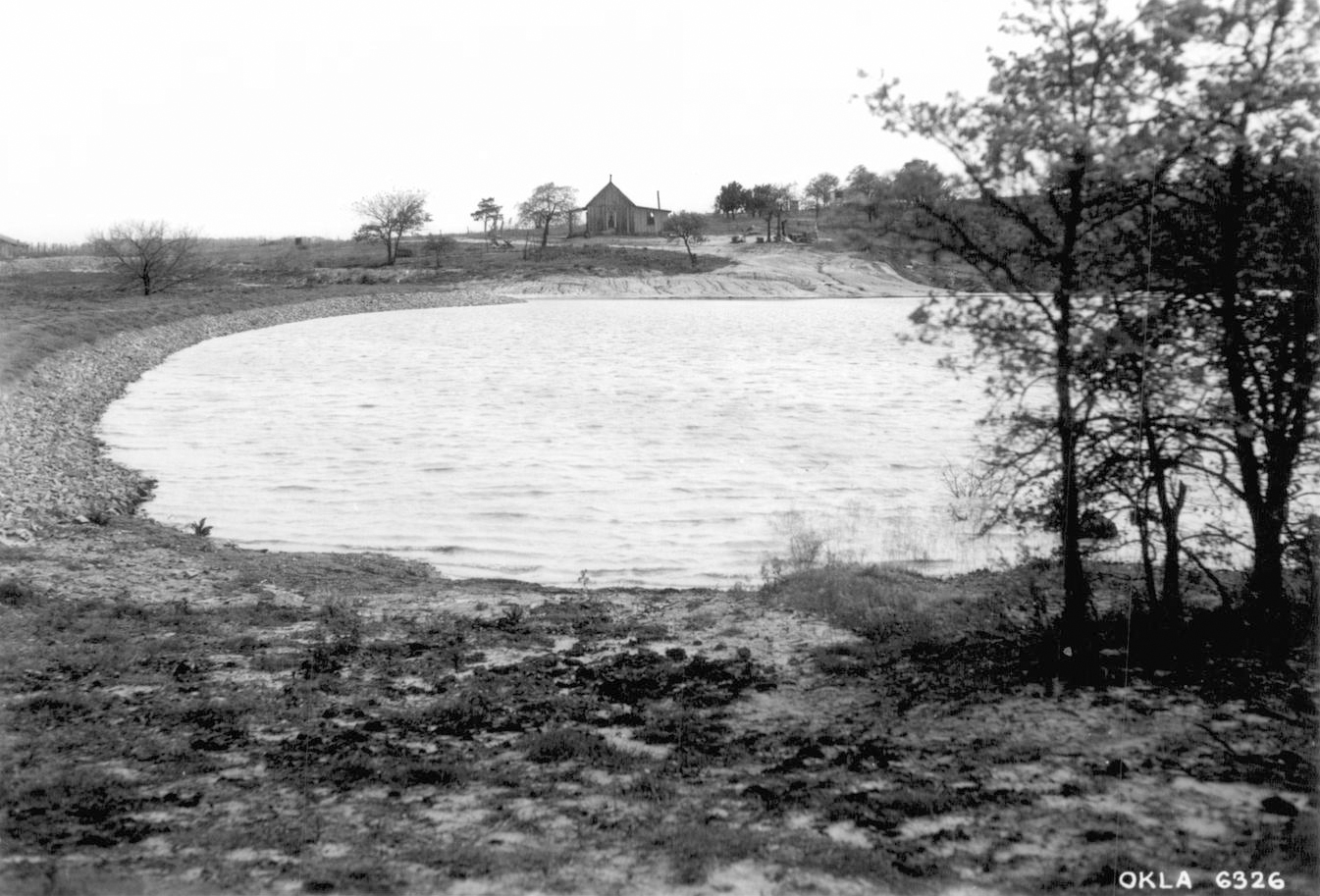
FARM PONDS.
Drought conditions during the 1930s led to the farmland rehabilitation and conservation programs of the Soil Conservation Service (SCS), which later became the Natural Resource Conservation Service, in Oklahoma. The SCS encouraged and built farm ponds among its other projects, including the demonstration of crop rotation, terrace and contour farming, fire prevention, and pasture management. In the 1940s Gov. Robert S. Kerr advocated the building of these small reservoirs and declared that 50,000 had been completed during his administration. By 1960 approximately 150,000 existed in the state, and by the end of the twentieth century it was estimated that more than 200,000 ponds covered approximately one-half million surface-acres. Oklahoma ponds provide numerous benefits to landowners. Most state livestock enterprises depend on these basins to provide a reliable and economical water source. Other uses include fish production, irrigation, fire protection, and wildlife habitat.
Economic benefits of Oklahoma ponds have proven to be substantial, however, for many pond owners. Recreation or aesthetic pleasure, and not income, have been the prime reasons for building the reservoirs. Of paramount interest are swimming, picnicking, angling, and wildlife watching. A typical Oklahoma pond is one-fourth to ten surface-acres of water in size and produces an average of 341 pounds of fish per acre. This average ranges from 57 pounds per acre to 931 pounds per acre.
Sport fishing has always been a popular pastime for many pond owners. A well-managed pond can consistently produce high-quality game fish. A new or newly renovated pond can produce harvestable-sized channel catfish in one year and catchable panfish and bass in three years. Most newly constructed ponds are stocked with largemouth bass, bluegill sunfish, and channel catfish. This combination can be self-sustaining with good management and has proven reliable over many years. The white amur or grass carp is now commonly stocked to help control aquatic vegetation.
Many pond owners raise fish for the table and for commercial sale. At essentially no cost, small fish quantities can be removed from the pond annually by angling. Up to 750 pounds per acre of food fish can be harvested annually if the pond is supplementally fed and fish stocks are maintained. At the beginning of the twenty-first century the cost of feeding the fish was twenty-five to thirty cents per pound of grain. Because they readily consume commercial fish feeds, channel catfish and hybrid bluegill are the most popular fish species for home food production, Rainbow trout are sometimes stocked and fed in the cool weather months to provide angling variety.
Ponds provide habitat and feeding areas for a variety of wildlife. Shallow, weedy areas furnish food for migrating waterfowl and hunting grounds for herons and other fish-stalking birds, and redwing blackbirds can be found nesting in cattail thickets bordering many small reservoirs. Most native wildlife is attracted to ponds for water and food, and in the early morning and late evening deer, opossum, and raccoon can often be seen along the banks.
Fire protection is a major benefit of rural pond ownership. A dry hydrant constructed on a pond near a residence can reduce the cost of home insurance policies and perhaps save lives in an emergency. As state populations and cities have grown, the number of urban ponds in suburbs, parks, and housing additions has increased. These basins bring beauty and recreation to urban areas. Neighborhood ponds increase homeowner environmental awareness because fertilizers and pesticides used on lawns and gardens directly affect the pond's water quality and aquatic animal health.
See Also
CONSERVATION DISTRICTS, ENVIRONMENT AND CULTURAL ECOLOGY, FISHING, SOIL AND WATER CONSERVATION, WATER QUALITY ACTS






